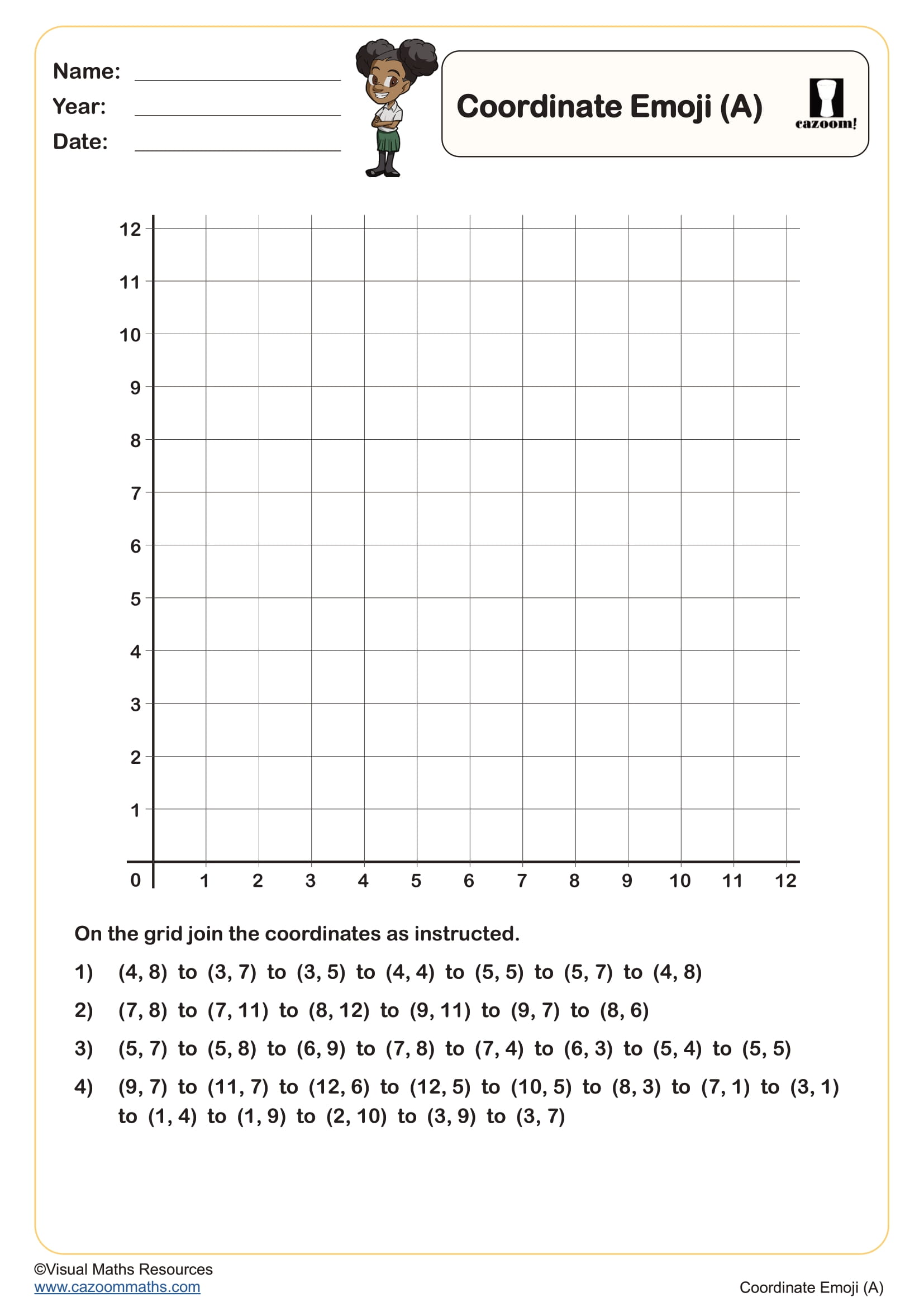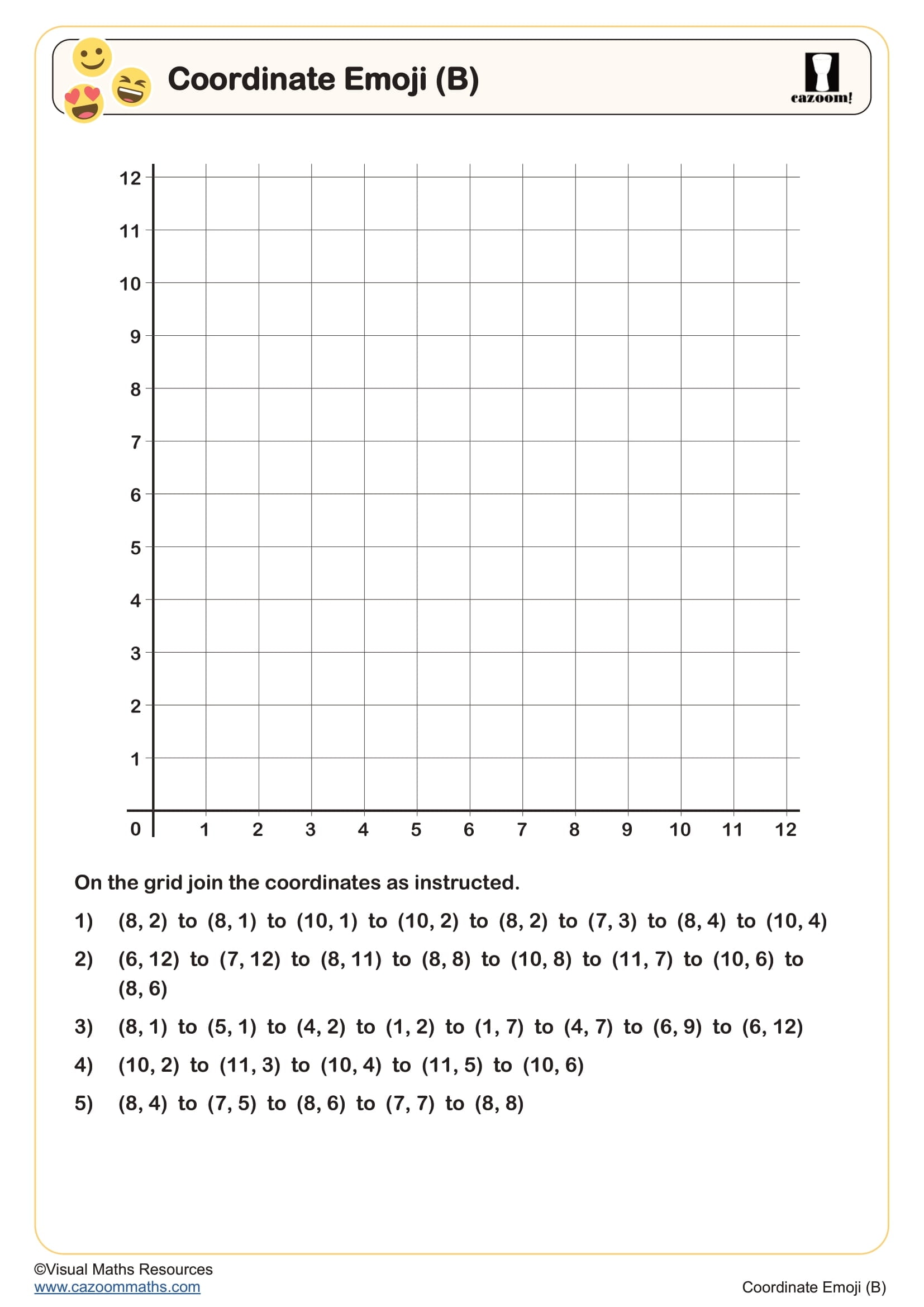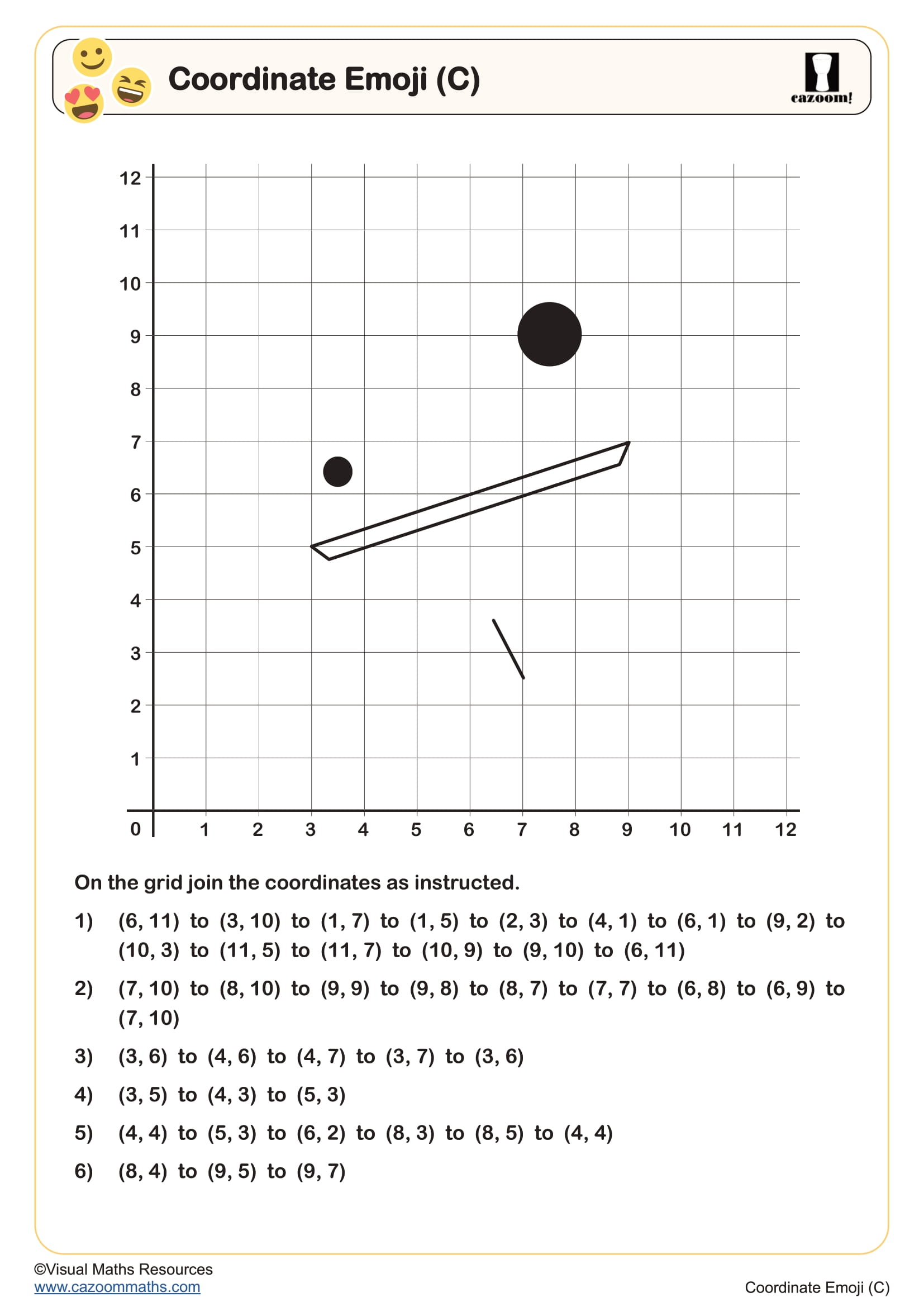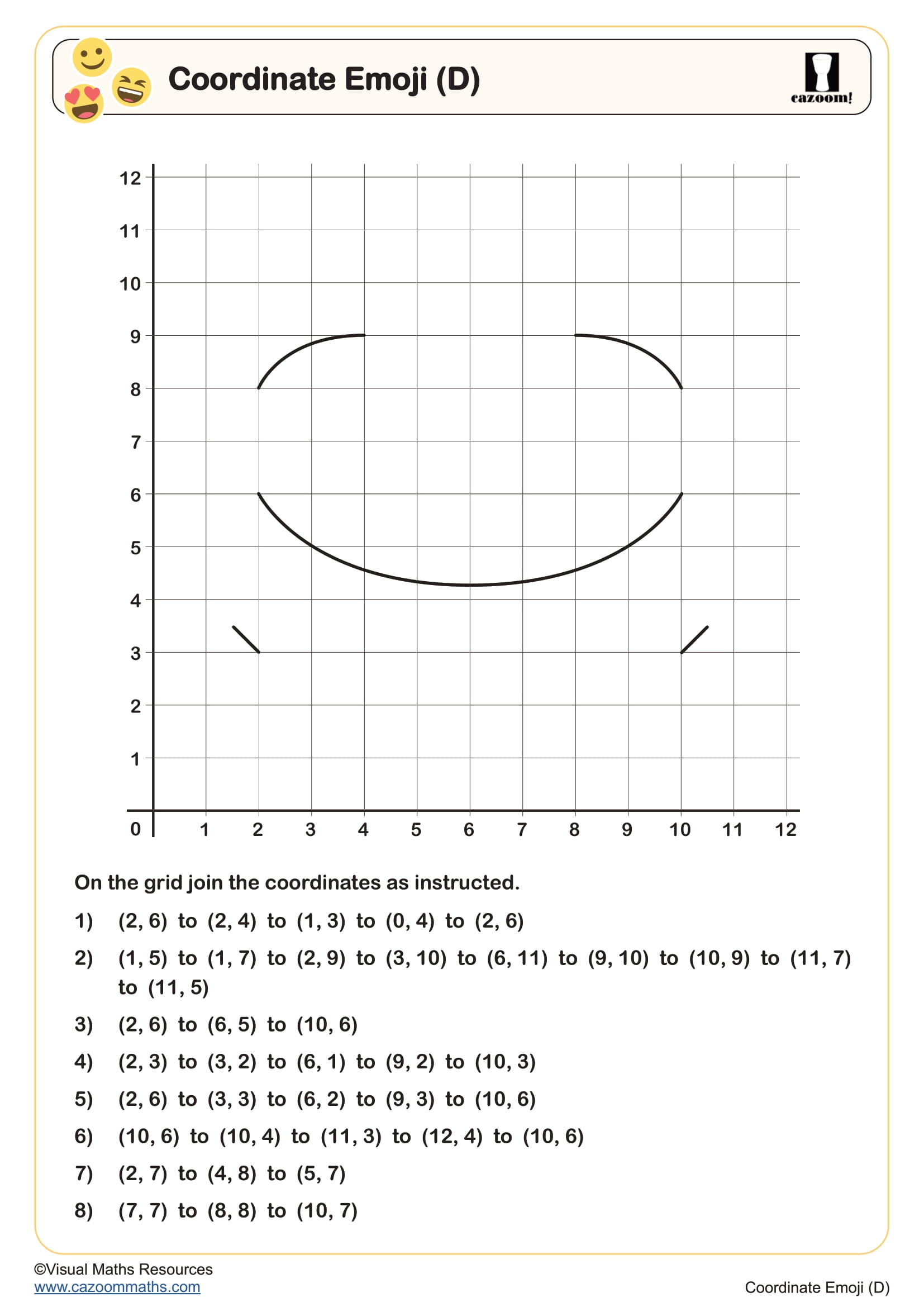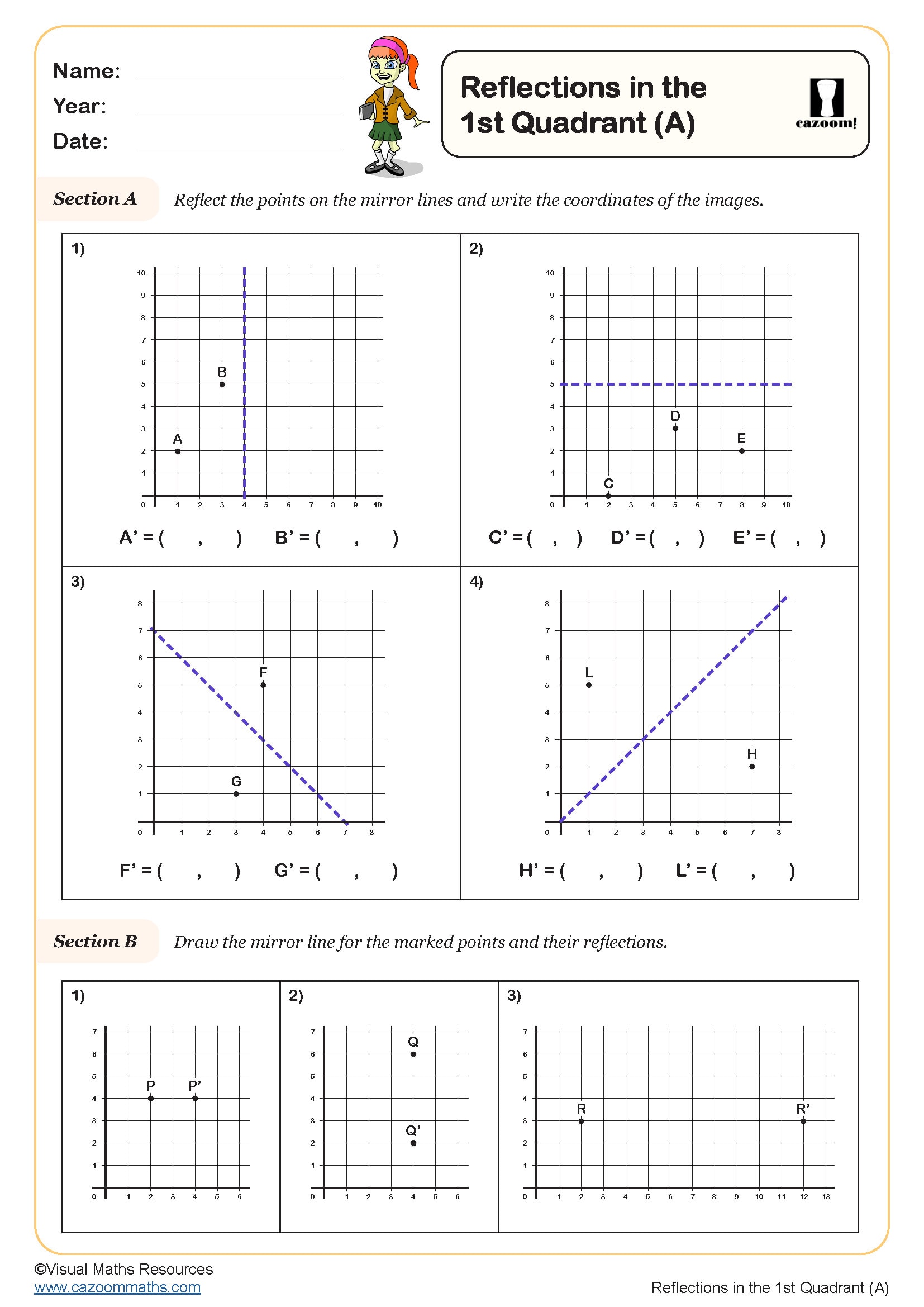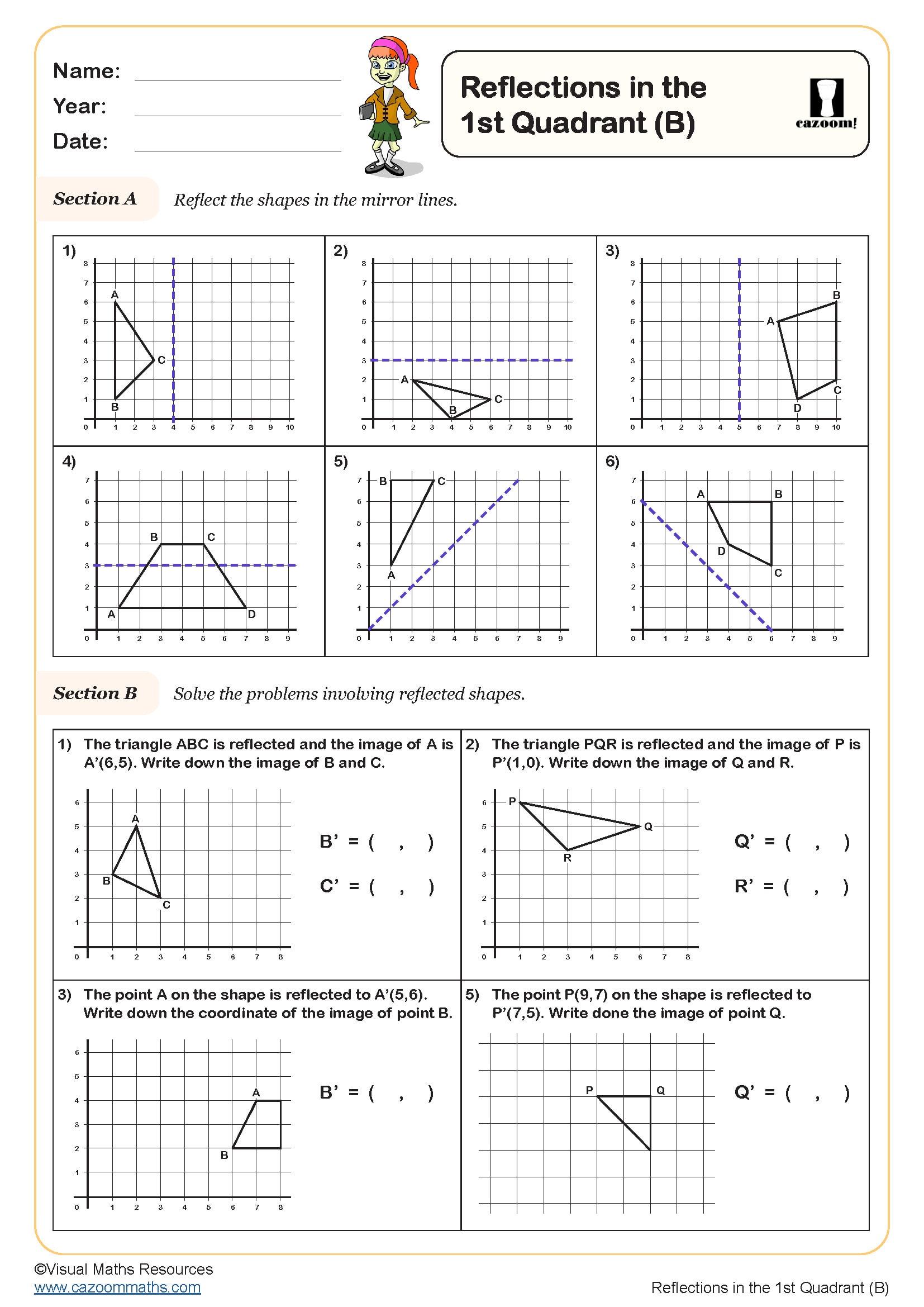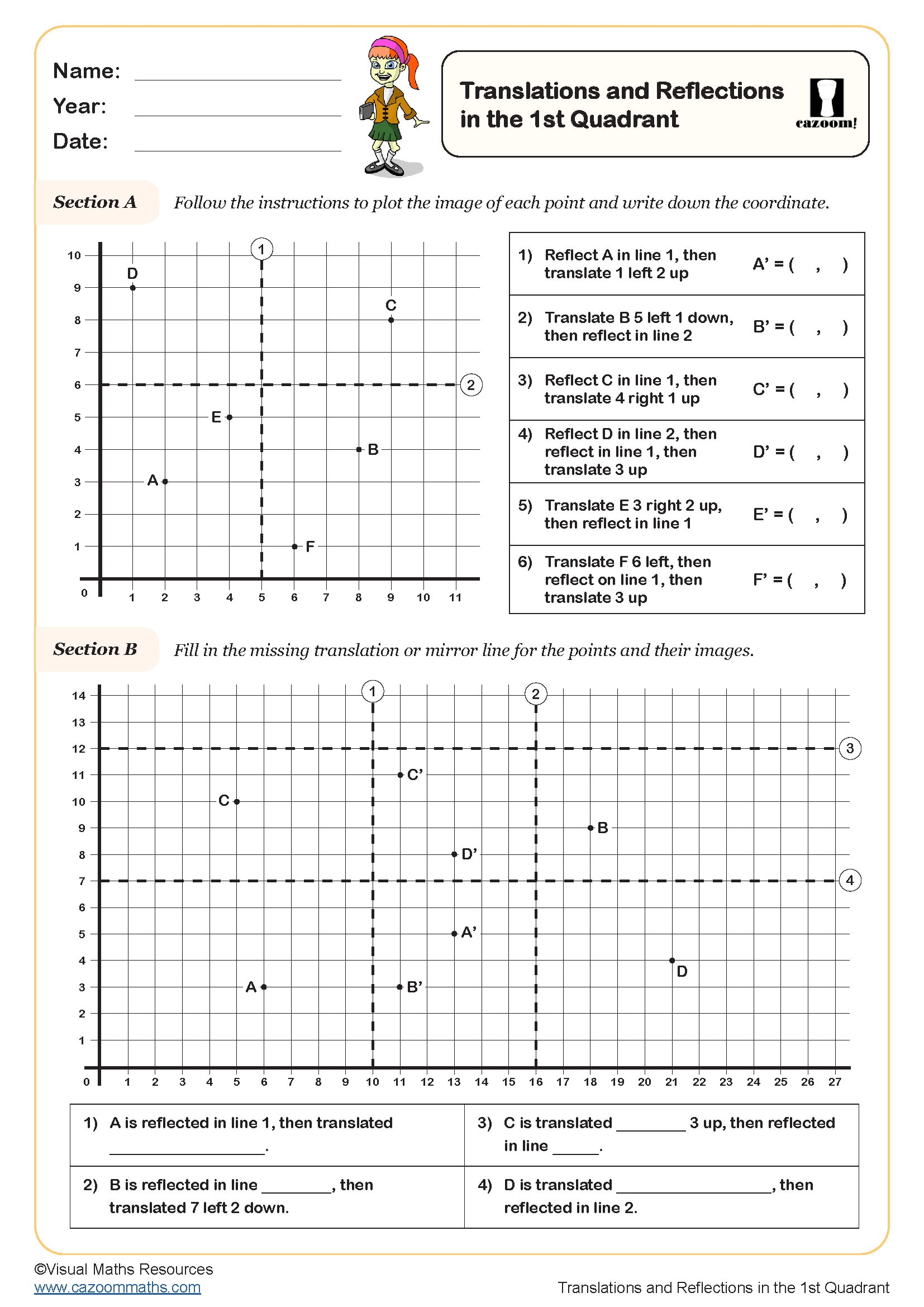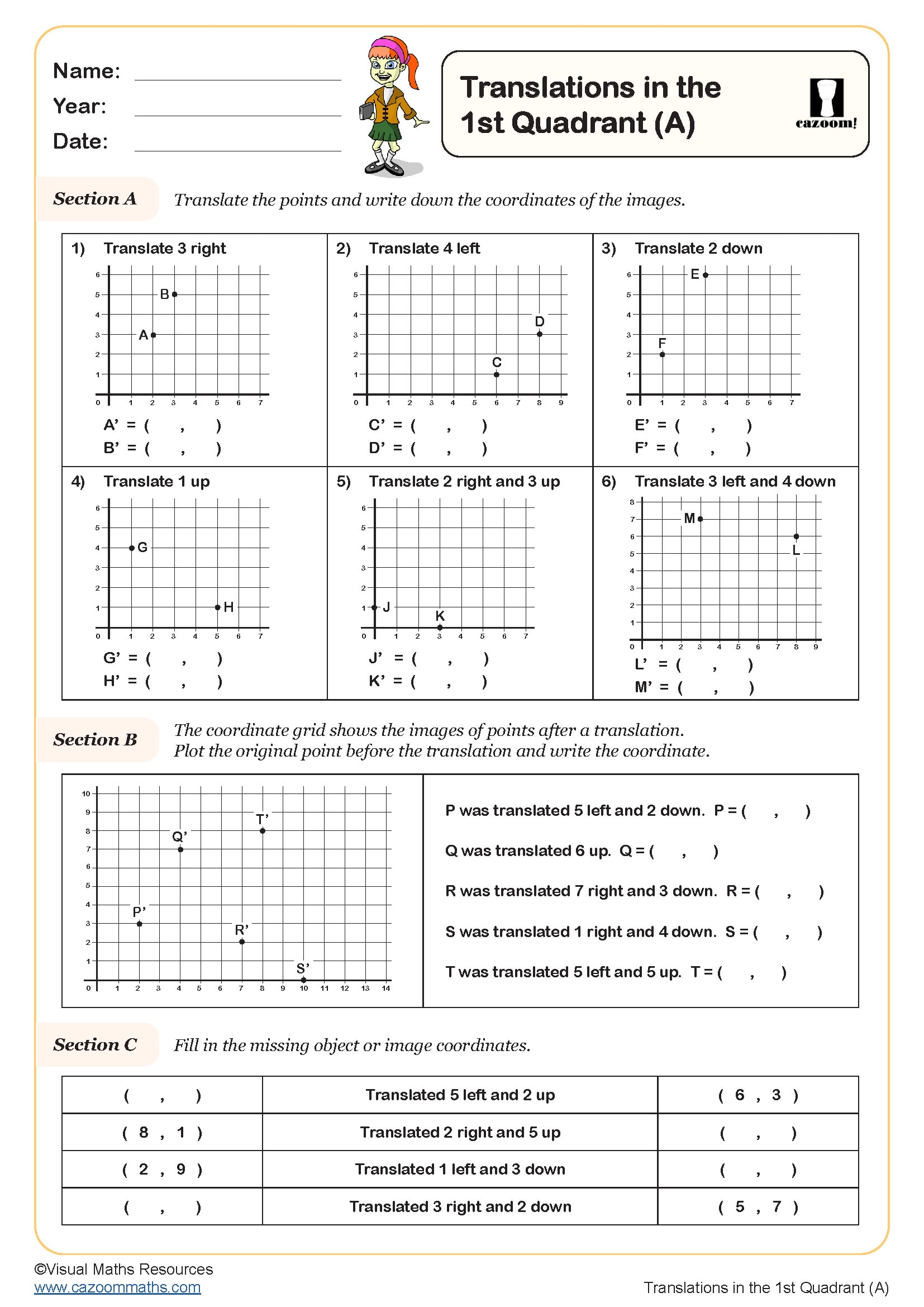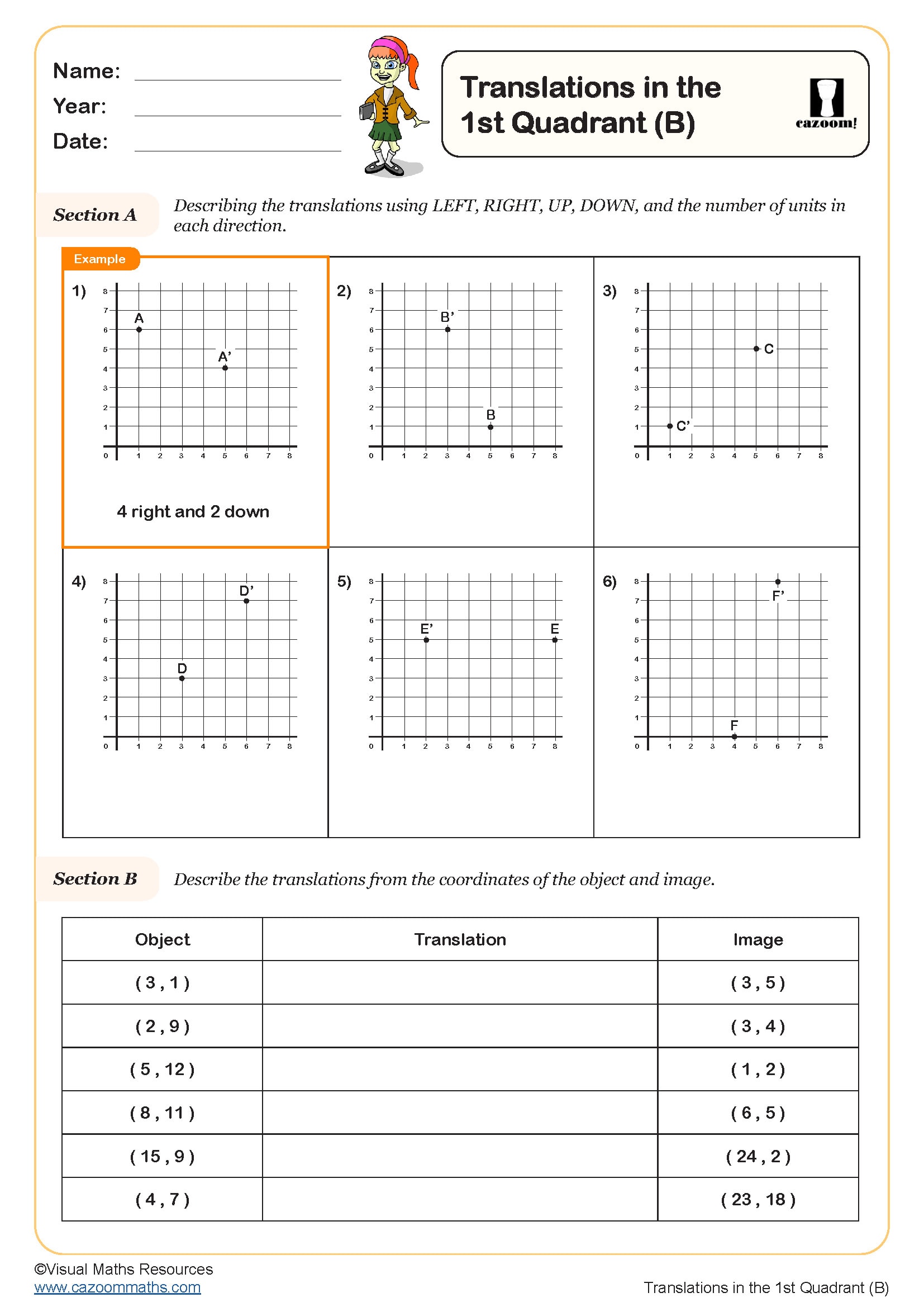Year 5 Position and Direction Worksheets
Master Coordinates and Transformations with Our Year 5 Position Direction Worksheets
Our worksheets stand out because they progress systematically from basic directional concepts to more complex coordinate work for your KS2 learners. Each of Cazoom Maths' geometry worksheets is created in ready-to-use, printable PDF formats and includes detailed solutions that show students exactly how to approach geometric reasoning problems, making our coordinates activities particularly effective for independent learning. Download our Primary School Geometry resources right away to make the learning process fun and engaging!
Essential Skills Covered in These Position and Direction Worksheets
We have included a wide variety of worksheets! Students progress from basic coordinate plotting in the first quadrant through to complex transformations with coordinates. The reflection activities are particularly popular with our classes - there's something satisfying about creating mirror images on a grid. Here's what we cover:
• Position in the first quadrant using coordinates
• Plotting and reading coordinate points accurately
• Reflection across vertical and horizontal lines
• Translation of shapes using coordinate grids
• Lines of symmetry in 2D shapes
• Problem-solving with coordinates and transformations
Why Year 5 Students Need Regular Position Direction Practice
We have observed that students who master coordinates early tend to find GCSE geometry much easier later on. Position and direction skills aren't just about plotting points; they're building spatial awareness that supports everything from reading maps to understanding graphs. Regular practice with these worksheets helps students:
• Develop stronger spatial reasoning abilities
• Build confidence with coordinate systems
• Prepare for more complex transformations in Year 6
• Improve accuracy when plotting and reading coordinates
• Master reflection and translation concepts thoroughly
Real-World Applications Where Students Use Position Direction Skills
Here's where position and direction skills prove surprisingly useful. Geography lessons become easier when students understand coordinates and grid references. Art and design projects benefit from understanding symmetry and transformations. Even computer programming uses coordinate systems extensively. It's actually quite satisfying when students make these connections themselves:
• Map reading and navigation using grid references
• Computer graphics and game design programming
• Architecture and engineering drawing plans
• Art and design create symmetrical patterns
• Sports analysis tracking player positions
• GPS technology and satellite navigation systems
